Trip Report: Syria
Visited in October 2022
Syria was a country I had been looking forward to for a long time. I was supposed to travel to this country already in April 2020. Then the pandemic came and Syria did not become country number 103 as planned but, with a delay of more than two years, my 141st country. It was also my third last country in the Middle East and in retrospect one of the best trips in 2022.
It goes without saying that Syria is not an easy destination in times of writing. The country is still plagued by war and although the security situation has improved massively in recent years, traveling to Syria still involves some risks. I have received many questions during my trip to Syria from people who would also be interested in visiting the country. For this reason, I try to answer all these questions in this article. Also, I want to give you a feeling about what you can expect during a trip to Syria.
What you need to know about traveling to Syria
First, you might ask: is it even possible to visit Syria? Yes, it is.
Syria has been open to tourists again for several years. Temporarily, the country was closed due to the pandemic, but in the meantime, the country has reopened its borders. Although it is still rather difficult and expensive to fly to Syria, the Lebanese capital Beirut is only a two and a half hour drive away from the Syrian capital Damascus and the border between both countries is open. Hence, most tourists travel overland from Lebanon to Syria. An alternative is the Jordanian capital of Amman. From there it is a three to four hour drive to Damascus.
However, it is important to know that you cannot travel to Syria independently, but only with a tour agency. The agency will take care of all the formalities required for the visa. They also book the hotels, which are included in the tour price, and arrange your itinerary. Moreover, the agency takes care of the transportation from Beirut (or Amman) to Damascus and back.
Since cars with Lebanese license plates are not allowed into Syria and vice versa, you are picked up by a Lebanese driver in Beirut and driven to the Lebanese-Syrian border. You will arrive at the border after about an hour and twenty minutes. Once there, the driver escorts you to the Syrian side and hands you over to a Syrian driver. The Syrian driver eventually drives you to Damascus, which will take another hour. Your tour guide will welcome you once you arrive in Damascus.
Does this mean that you always have your tour guide around you in Syria? Not necessarily. In theory, you can move around freely in the cities if you want. However, as soon as you leave Damascus, you pass various checkpoints and for Palmyra you even need a special permit. I suppose it won’t be possible to get through all the checkpoints, especially not those on the way to Palmyra, without a guide. Anyway, my point is that Syria is not like North Korea, where your tour guides follow every of your steps outside of the hotel. In Syria, it’s not a problem if you want to have a coffee alone at some point.
By the way, there are various tour agencies in Syria to choose from. We booked our trip with Marrota and were very happy with them. If you also want to travel to Syria, you can contact Ayoub via the Marrota website or Whatsapp (+963 954 840 021).
Our itinerary
If you contact Ayoub, he will send you itineraries of different lengths to choose from. To see the whole country (Syria is about half the size of Japan) you would have to plan about two weeks. For us, five days were enough and gave us enough time to see some of the country’s highlights.
However, we did not choose one of the suggested routes from the travel agency but gave them our own itinerary. The reason was that their suggested five-day itinerary goes even up to Aleppo, which in my opinion is a bit too much for five days. Also, the time in Damascus with this itinerary seemed too short. I wanted to spend more than just one day in the capital.
So in the end we decided on the following route: Damascus – Maaloula – Homs – Krak des Chevaliers – Palmyra – Damascus. The last day of our five-day trip was actually a rather short one, because at 11 a.m. our driver already picked us up to get us to Beirut. Looking back I was more than satisfied with this route. We were able to visit Damascus at a comfortable pace, since we had two full days there. And we also had enough time for the other places.
So, what kind of places are we talking about on our route?
Damascus is the capital and largest city of the country. It is the starting and ending point of virtually any Syria trip and deserves at least 1.5, but ideally 2 days. Damascus is a typical Middle East city with a bazaar, souk, mosques, churches, lots of traffic, delicious street food and a long history. In fact, some sources call Damascus the oldest continuously inhabited city in the world.
Located about an hour’s drive north of Damascus, Maaloula is a Christian town that has suffered greatly from the Syrian civil war. Extremists attacked and conquered this town in 2013, kidnapping or executing numerous inhabitants. The highlight of this city is on the one hand the Saint Sarkis Monastery and on the other hand how the houses built into the rugged mountainside.
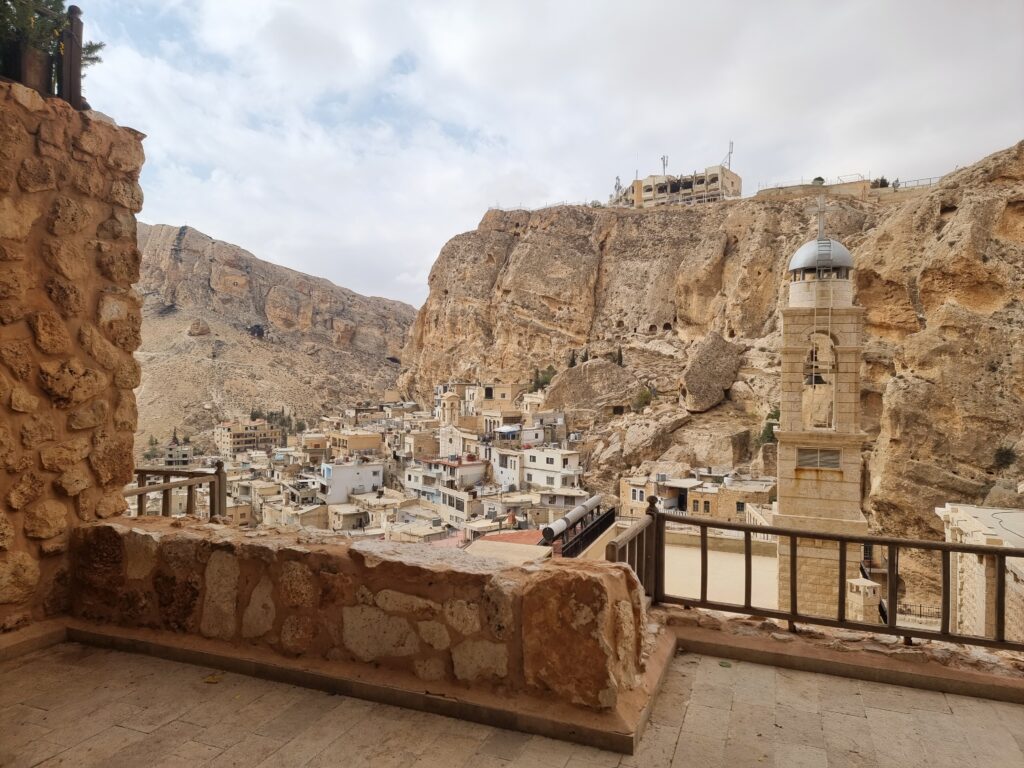
In Homs we made only a short stop, visiting a church where the belt of the Holy Mary is said to be. Homs is one of the cities that was damaged the most during the war. We could see this especially in one particular neighborhood. There, one destroyed house stands next to the other and makes for a pretty depressive feeling.
The next two places we visited before returning to Damascus were both UNESCO World Heritage Sites. On the one hand, we went to the Krak des Chevaliers, one of the best preserved medieval castles in the world. This site is only about 30 to 45 minutes away from Homs. On the other hand, we drove to the Syrian desert to visit Palmyra, Syria’s most important site. Palmyra was a 2.5-hour drive from Homs and an almost 4-hour drive back to Damascus.
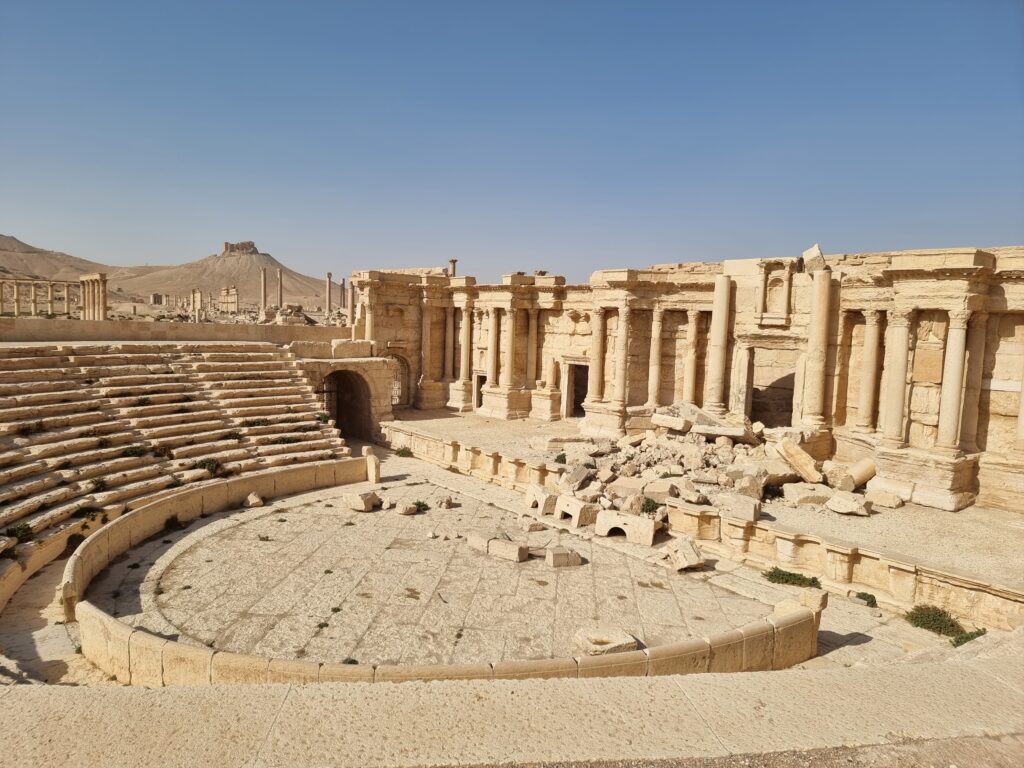
We still missed some places in Syria. For example Bosra in the south of the country, where you can visit the famous Roman theater, another UNESCO World Heritage Site. We neither had enough time for other places like Hama, Aleppo or Saidnaya. With only five days, you have to prioritize and we chose the places that interested us the most.
Is Syria safe?
Let’s get to the most important question. Is Syria a safe destination?
The first thing many people associate with Syria is probably misery, suffering and grief. Since the outbreak of the civil war in 2011, the world has been regularly confronted with images of destruction and violence from Syria. In the meantime, the situation in Syria has calmed down a bit. Life goes on in most Syrian places as it did before the war. In some, few other places, the war is still omnipresent.
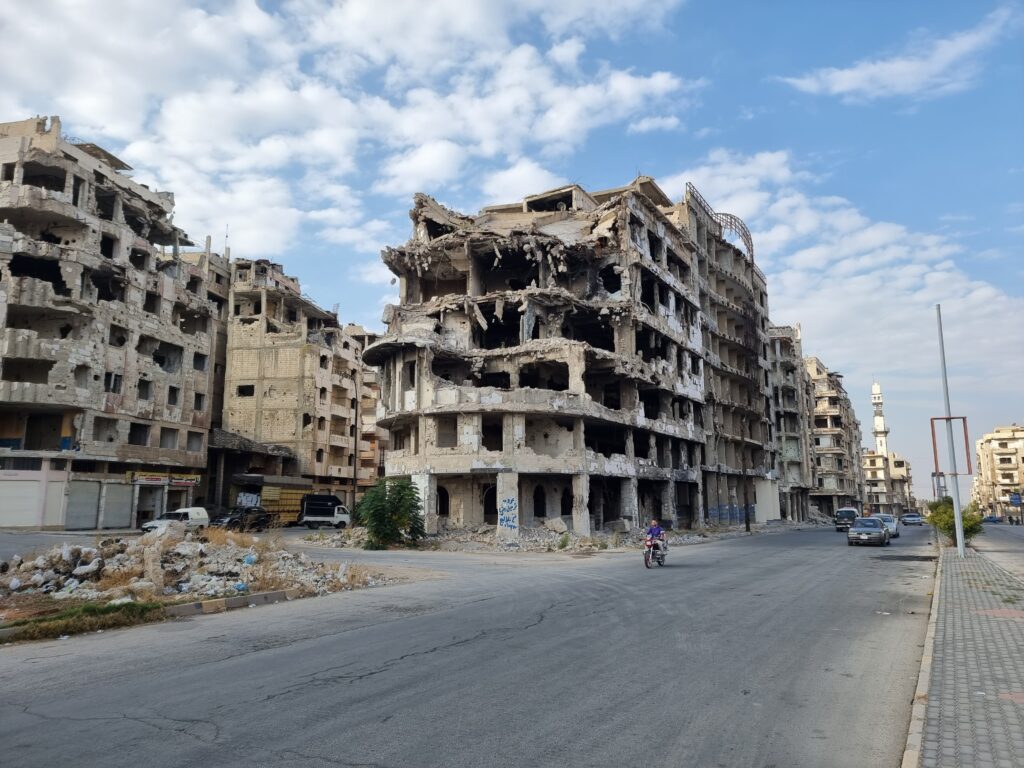
Even if pretty much all foreign departments of European countries advise against traveling to Syria, I personally would not call Syria a high-risk country anymore. The situation in all Syrian places that are of tourist importance is now stable again and the likelihood of something bad happening to tourists in Syria is low.
Of course, this does not mean that Syria is now as safe as Singapore. Bombings are no longer a regular occurrence, but they still happen. For instance, Damascus was attacked by Israeli missiles during our first night in Syria. However, this attack was not directed at civilian but at military targets. We did not notice anything of this attack during our sleep, but as you can see, things like that happen from time to time.
At the same time, you have to take into account that many countries do not run an embassy in Syria anymore. That means that if something happens to you, no one will be able to help you. Moreover, Syria is a country where your bank card will not work. Again, if anything happens, in the worst case it could mean that you are without money.
Despite everything, I consider Syria nowadays to be a more or less safe destination. Therefore, I brought my mother with me on this trip. For her it was already the third trip to Syria after 2007 and 2008, but the first since the civil war. Funnily enough, as you regularly see other tourists with their guides and have a chat with them, I got some fame after a while and became known as “the tourist who brought his mother to Syria”.
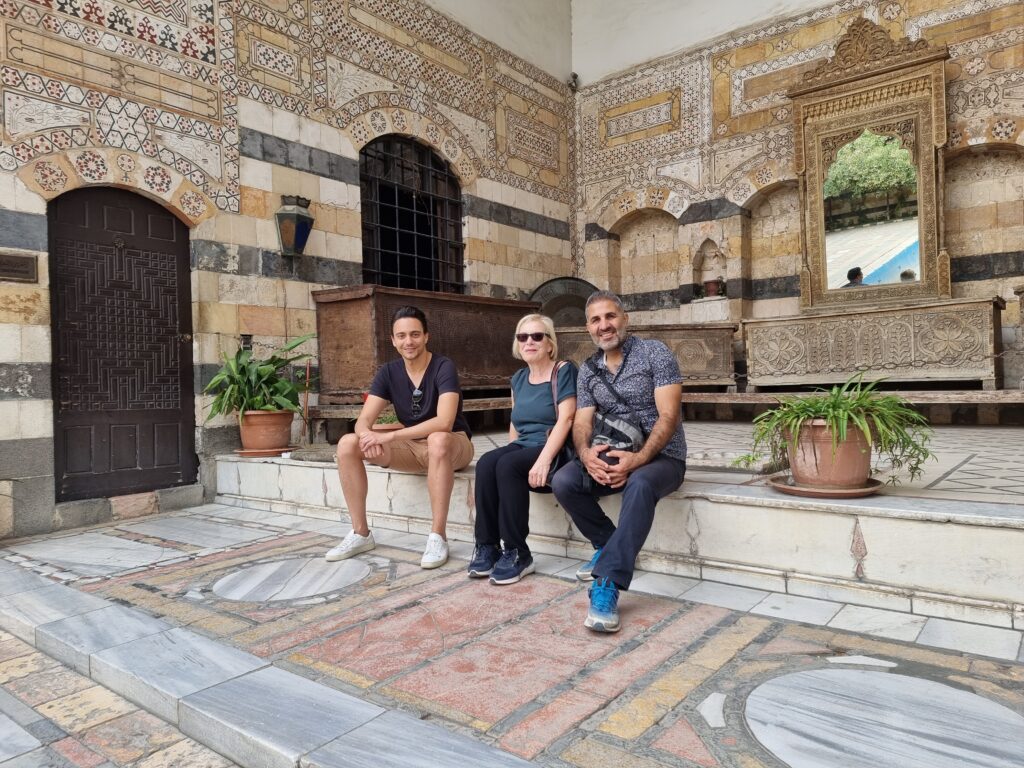
Long story short, we never felt unsafe during our trip in Syria. However, our guide told us that there are still sleeper cells of extremists in the country. Also, when we visited Palmyra, we could not take the fastest route back to Damascus, but had to go via Homs. Several roads are still not open to civilians for security reasons. Nevertheless, I am convinced that as a tourist you must be very unlucky to have something bad happen to you in Syria.
Our experiences in Syria
So, how was Syria? To be honest, I had a great anticipation for Syria and was sure that I would enjoy this trip very much. In the end, I must say that this trip even exceeded my expectations.
In March of this year, I visited Jordan, Syria’s neighboring country, another amazing destination. However, the atmosphere in Syria is completely different. While Jordan has a warm-hearted but also very conservative culture, Syria is one of the most progressive countries in the Arab world. In Damascus, you don’t see many people dressed religiously, many women are wearing makeup, and there is even nightlife. In any case, I found Damascus to be as liberal as Beirut. And Beirut is widely recognized as the most liberal Arab city in the world.
We also visited various cafes and did people watching there. Cafés in Damascus are mostly located in inner courtyards and are places where young people meet. The people go there to smoke shisha and drink cappuccino. These cafes could as well be in Berlin or Amsterdam. All in all, Damascus looked to me like a very open-minded, western-influenced city when you compare it to other cities in the Middle East.
Looking back, Damascus was the highlight of Syria for me. I really liked the city and could have imagined staying longer. The sights of the capital were cool, especially the Umayyad Mosque. While I have to admit that I’ve lost a bit of enthusiasm for churches, mosques and other religious buildings over time, this mosque really blew me away. One of the most spectacular religious buildings I have seen so far.
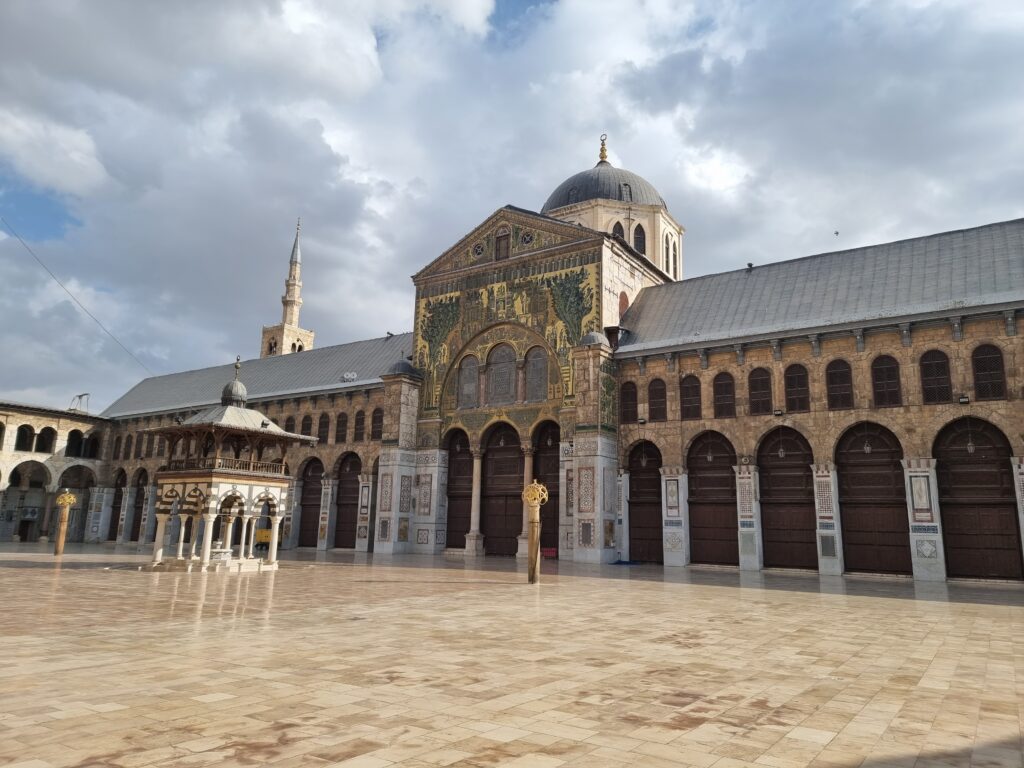
However, it was not the tourist attractions that excited me in Syria, but the stories the country experienced in recent years. For example, in Damascus you can see the Syrian flag painted on countless walls and doors. When more and more extremists invaded the country, this was a sign or a declaration by the Syrians that they stand by their country and also their system.
Western media have been fond of telling the story that Syrian President Bashar al-Assad is leading a war against his own people. This has earned the Syrian president the nickname “Butcher of Damascus,” among others. That many Syrians backed Assad is something you rarely if ever read about in western media. When the country was invaded by terrorists such as the Islamic State or the al-Nusra Front, many Syrians who were critical of the system also knew that a regime change at that moment would probably lead to a much greater evil. Just as in Iran in 1979.
You can see Assad’s face all over the country. Damascus was probably the city with the highest density of posters of the head of state that I have ever been to. Often, you don’t walk three minutes before you see the next poster of Assad. Kim Jong-un and Ali Khamenei would probably be envious if they realized how comparatively few pictures of them hang in Pyongyang or Tehran.
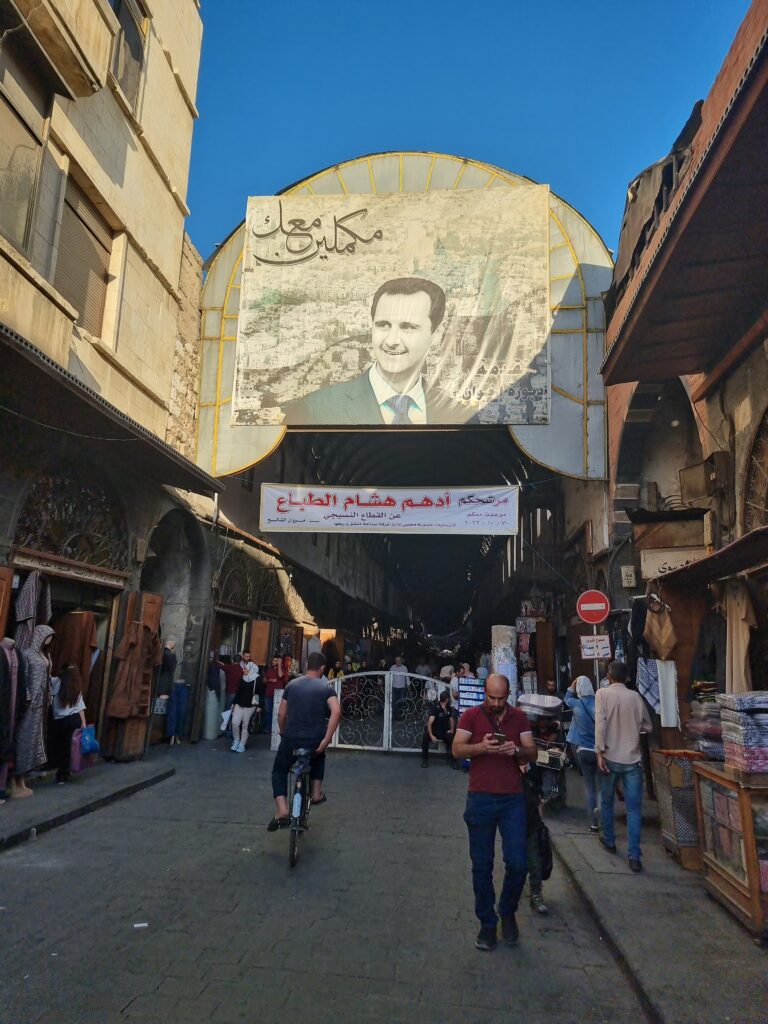
What is noticeable in Damascus, but also everywhere else in Syria, are the international sanctions under which the country suffers. You don’t see many international brands here, but they are still present. Practically all brands are smuggled here from Lebanon. Besides, as I mentioned earlier, Syria is also cut off from the international financial system. That means, as a tourist you have to bring a lot of cash, as your cards will not work here.
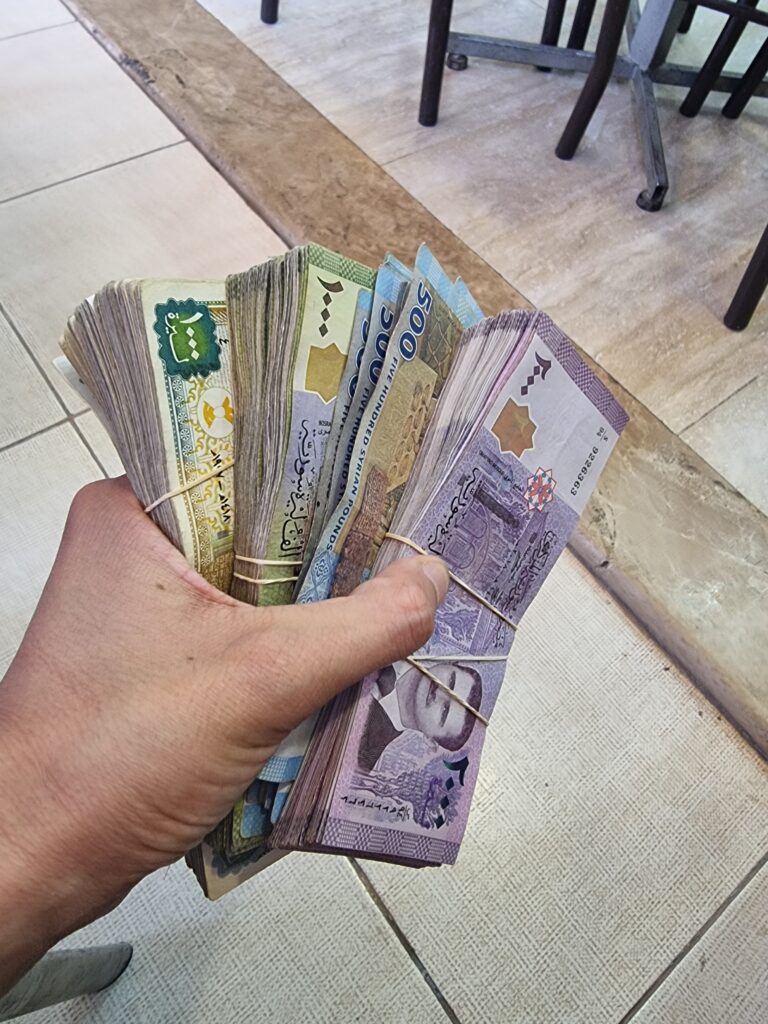
In Damascus, by the way, you don’t have the feeling that you are in a country that has been at war for more than ten years. That changes, however, as soon as you leave the capital. As we drove north towards Maaloula, we passed hundreds of badly damaged buildings, most of which are now uninhabited. At this moment, it became visible to us for the first time what the war has done to this country.
Not only the effects of the war on the cities and the buildings but also the human tragedies become more evident when leaving Damascus. In Maaloula, for example, we saw nuns who had been kidnapped by al-Nusra Front and held captive for several months. Finally, the government was able to liberate the nuns by exchanging terrorists with them. You have to imagine that. The nuns’ faith was probably their biggest help to survive this torture.
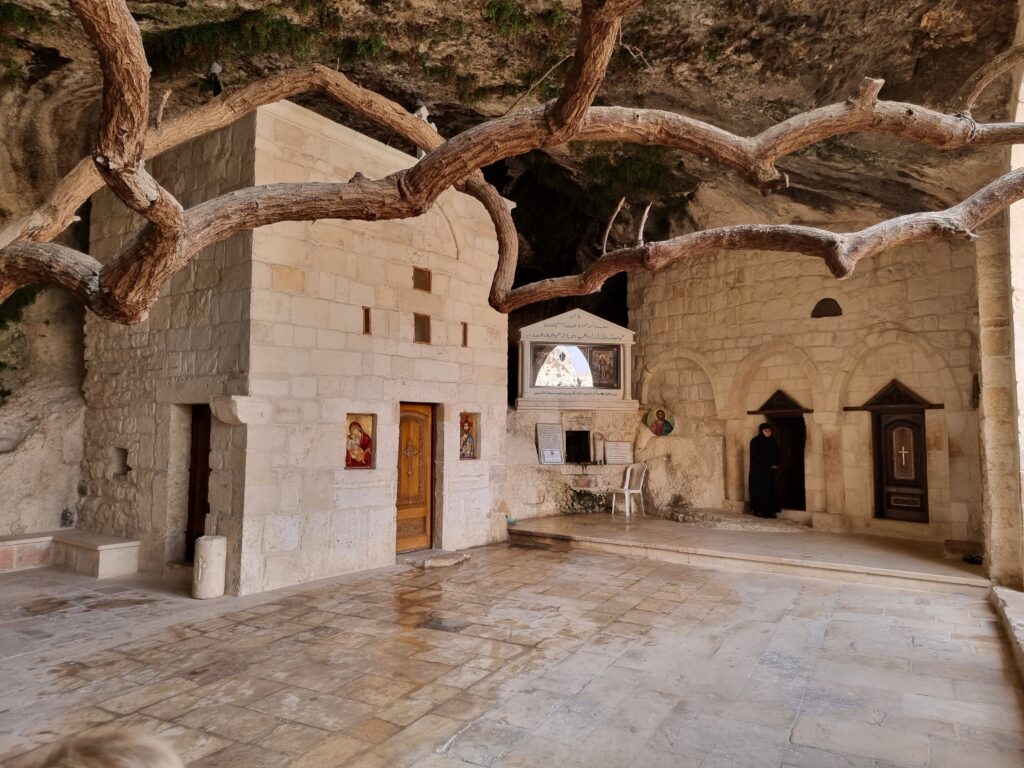
We also visited the Hotel Safir, once the showpiece of the town, but just a ruin these days. Since the hotel offers the perfect view over Maaloula and you can spot attackers from far away, the extremists captured this building in the first days of their occupation.
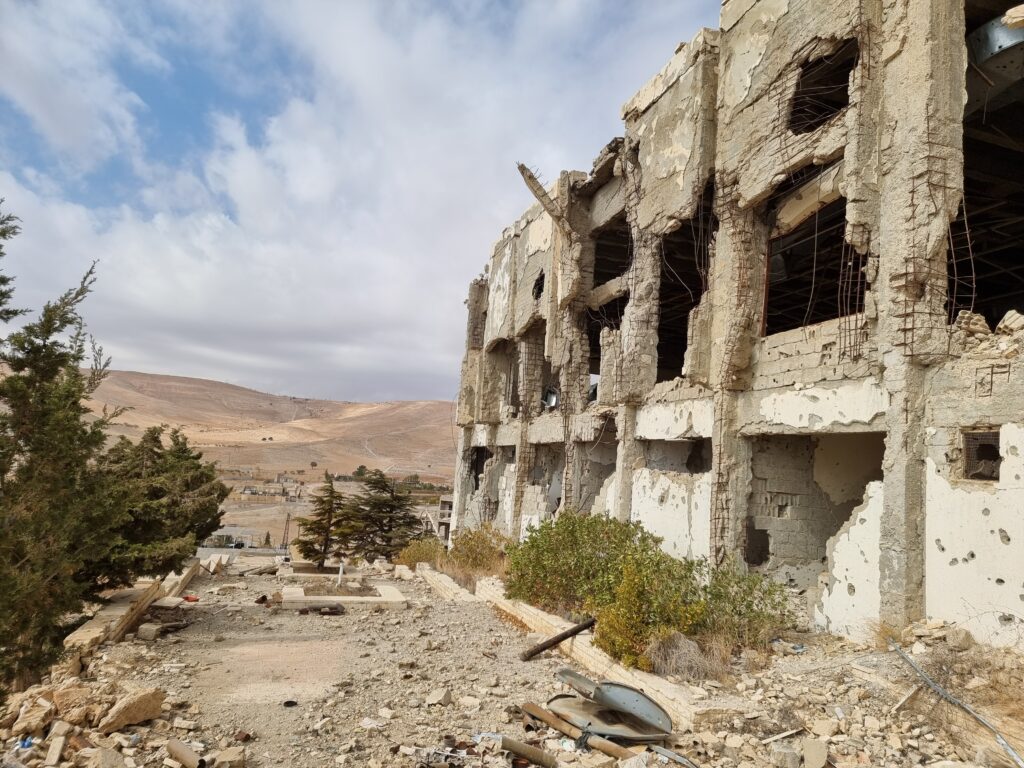
By the way, the roads in Syria were in pretty good condition and you can get from one place to another quickly. Interesting was that I didn’t see a single gas station in all of Syria. Although Syria would actually be an oil-rich country, they have to import their gasoline from Lebanon. The reason for this is that 90% of all Syrian oil fields are under American occupation. Under the pretext of protecting the Kurdish population in northern Syria, the US army is plundering the natural resources of Syria in an act of piracy, you can’t call it anything else. And you will not read much about that in Western media either.
The two UNESCO sites, Krak des Chevaliers and Palmyra, were quite cool. Although, as I mentioned, I was less interested in the historical facts about these sites and more interested in the actual stories about them. At the Krak des Chevaliers, for example, it was the story of how the Syrian army was able to retake the castle from the extremists. Standing up there at the top of the castle and hearing these stories, it seemed surreal that something like this happened at this site just a few years ago.
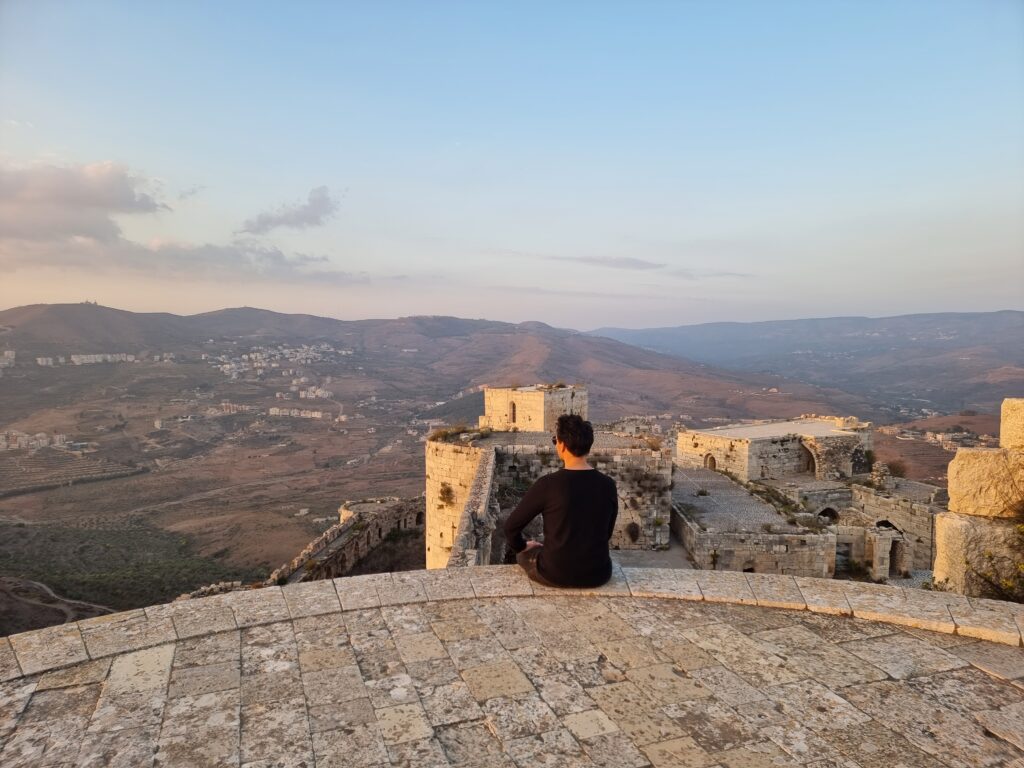
By the way, after our visit to the Krak des Chevaliers, we stayed in the village next door, Al Mishtaya. Our travel agency booked all our hotels and they were, all in all, fine. Interestingly, Syria (especially Damascus) is full of 5-star hotels. At least they declare themselves as 5-star hotels. In reality, however, the hotels are quite outdated and always had several flaws when we were there. This was not a big deal and the hotels were still fine. But just in case you are looking forward to a 5-star hotel. Now you know what you can expect.
Palmyra, our last stop, was then both impressive and depressing. Impressive because it is a archeological site that covers a fairly large territory. Depressing because most of it is unfortunately badly damaged. The extremists from the so-called Islamic State destroyed and looted this site a few years ago. Whether they can restore Palmyra as it was before the civil war is more than questionable. That will not be the highest priority anyway, as the authorities will most likely focus on the restoration of the cities first.
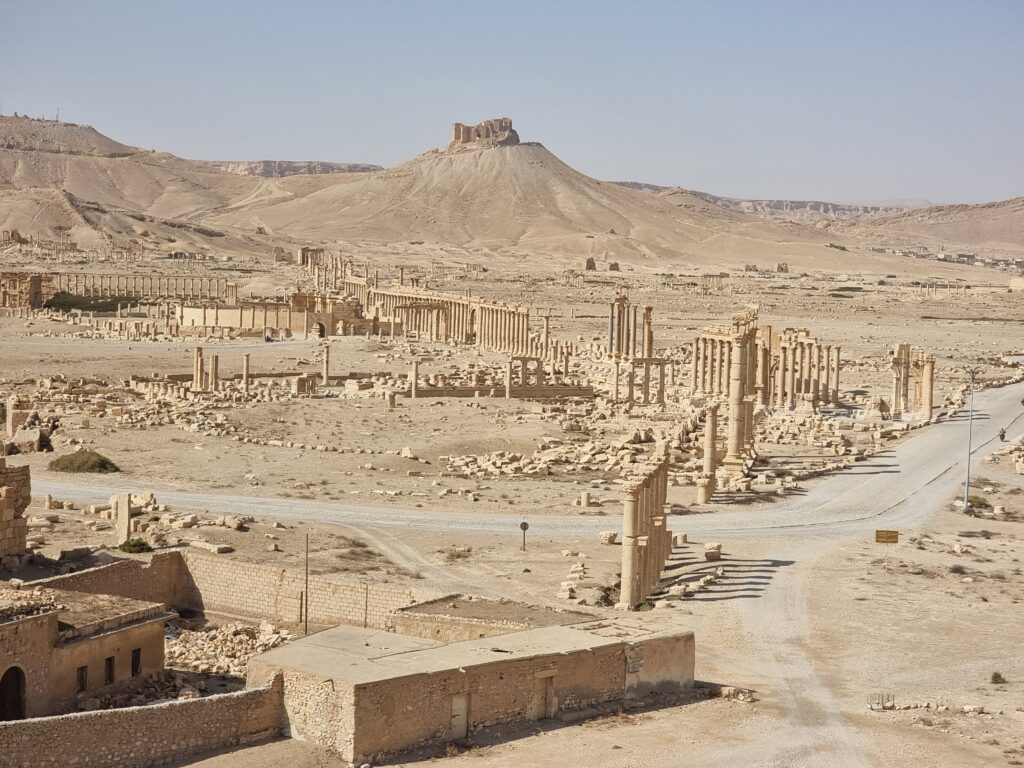
While we were visiting Palmyra, we also saw two vendors. One of them had a camel with him, the other was selling souvenirs like silk scarves or (old) guide books. My mother bought a silk scarf to support him. Probably it was the only revenue the vendor had made that day. You have to remember that before the civil war, Syria had 8 million tourists a year. Today it is a little more than 1,000 per year.
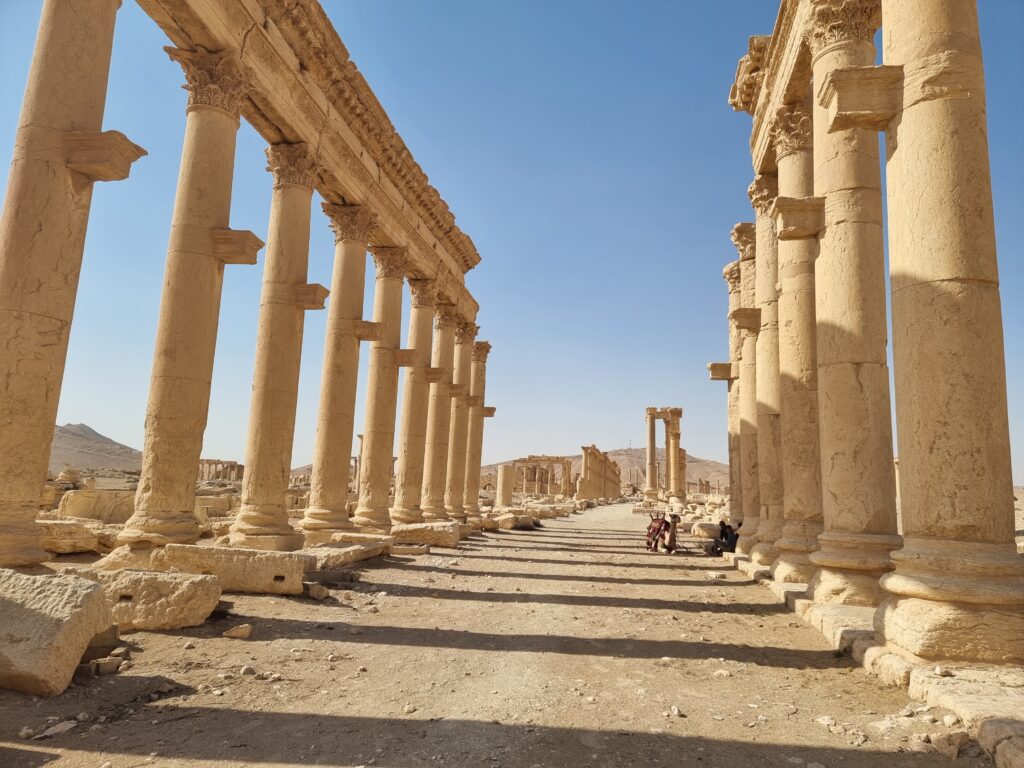
When a country loses tourists due to a crisis, it usually happens within a few days. However, until the tourists come back, it can be years or even decades. I must say that the Syrians were extremely friendly to us and we always felt welcome. I think seeing tourists also provides a feeling to the locals that normality is coming back a little bit. And after what has happened to Syria in the last decade, there is probably nothing more important to many than the normalcy that existed in the country before 2011.
All in all, our experiences in Syria were great. Of course, it would go beyond the scope of this article to tell every story we heard about the country and its people. However, in our short time we learned a lot about the country and saw many different places.
Is Syria worth a trip?
Syria was one of my travel highlights in 2022. A wonderful country with amazing people, beautiful places and like everywhere in the Middle East fantastic food. Of all the countries in the Middle East, Syria would certainly be in my top 3. For this reason, Syria is without question worth a trip.
It is a pity but also understandable that most travelers consider Syria as a destination that is still too scary. Probably for many a trip to Syria is also too complicated, which is why they choose other destinations. However, if you take a closer look, traveling to Syria is not as difficult as you might think. In the end, it is a guided tour where you don’t have to take care of almost anything.
Anyway, a trip to Syria is not really cheap but still affordable. For our 5-day tour we paid $1,136 per person. The price breakdown was as follows: $860 for the tour, $30 for the Palmyra permit, $166 single room supplement, $80 for early check-in since we arrived in Damascus at 7am. On the other hand, it is quite cheap as soon as you’re in Syria. In five days, I spent about $150 for food, drinks, coffee, etc. A little tip: if you change your money at the border, you get about 20% more than in Damascus or anywhere else in Syria.
In the end, Syria is like all difficult destinations that require the help of a fixer: it’s not cheap. Nevertheless, I was more than happy to spend this money on a trip to Syria. Right now you have the chance to enjoy a country that had many tourists in the past without having to share the sights with other people.
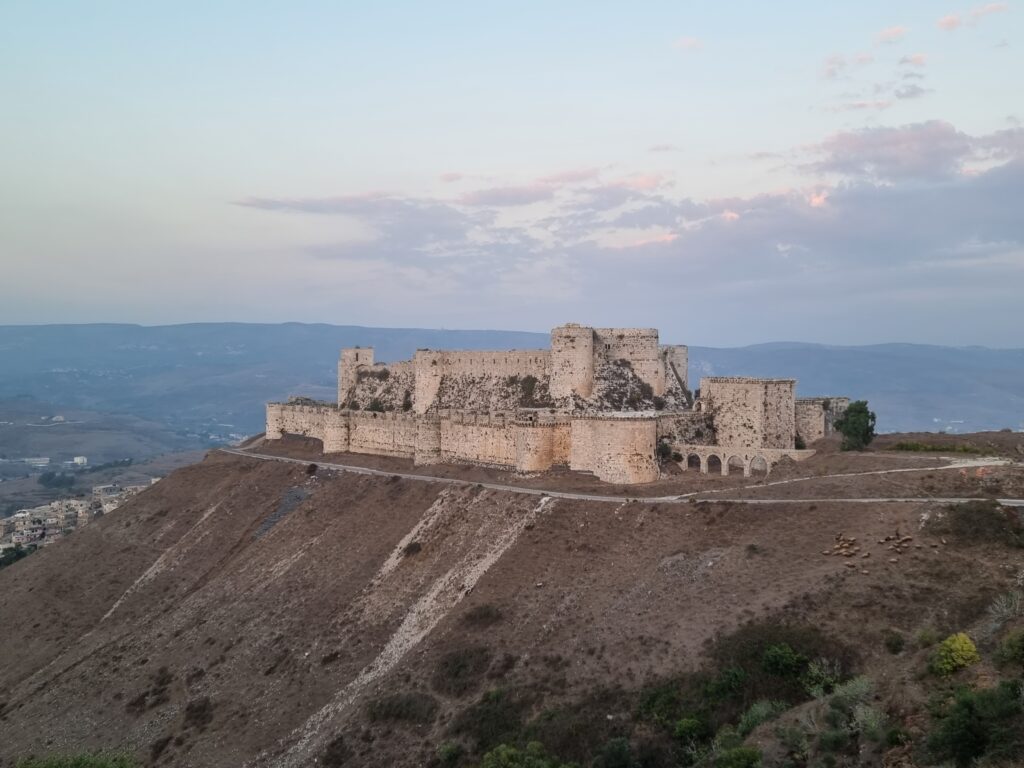
What does the future hold for Syria? Good question. Although I would very much like to see normality return to Syria soon, it seems unlikely in the near future. In the north, the Turkish army is still attacking Syria’s Kurdish population, the Americans are still occupying the Syrian oil fields, and with political partners like Russia or Iran, Syria will probably always have problems in the long run. Not really good perspectives if you ask me.
However, I hope that my outlook is too pessimistic. For the Syrian population, of course, I hope for the opposite. After all, Syria is among the best the Middle East has to offer. Therefore, I wish the country and its tourism industry only the best for the future.
Click here to find the trip reports of the 170+ other countries I have visited so far!
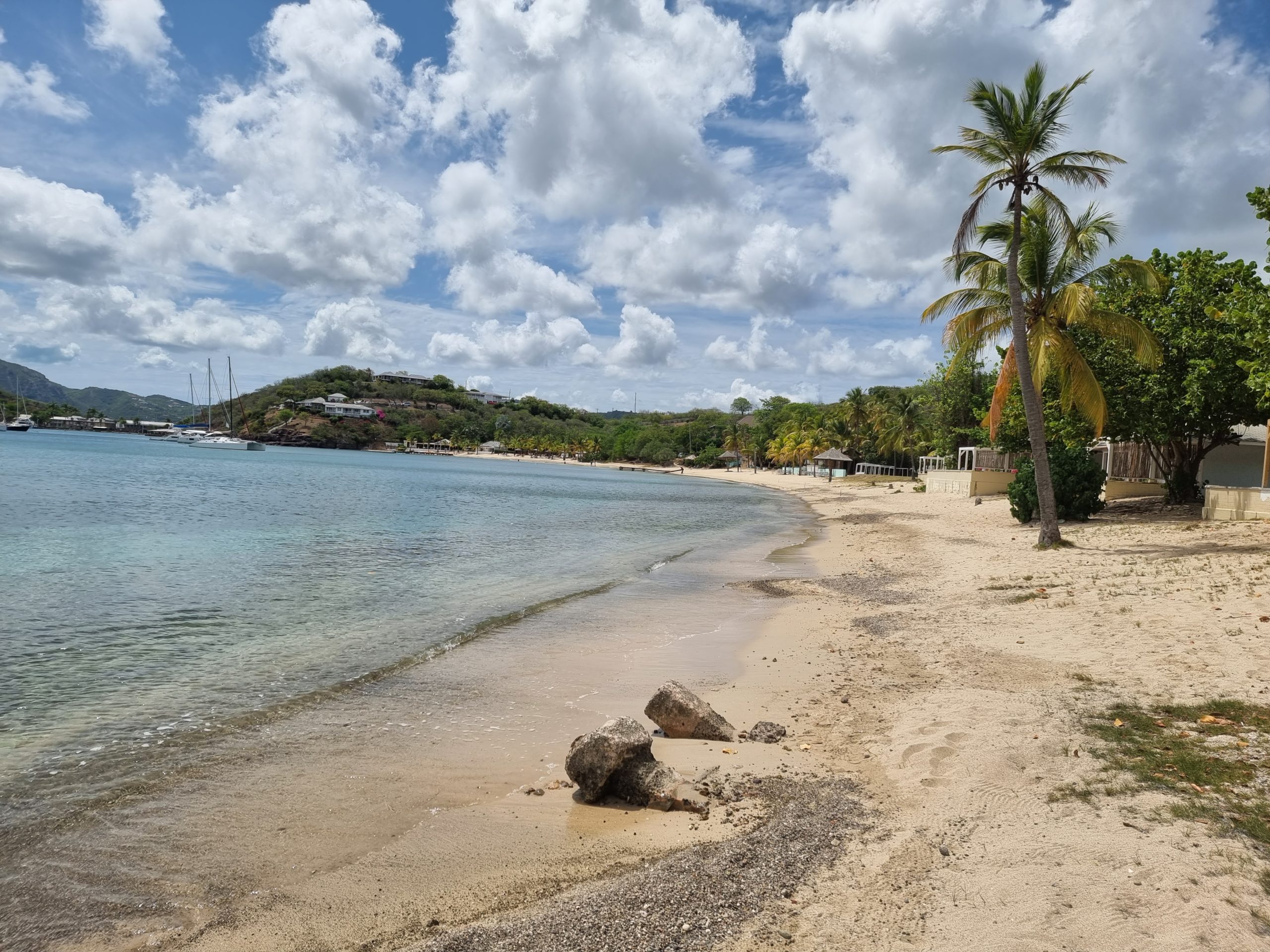
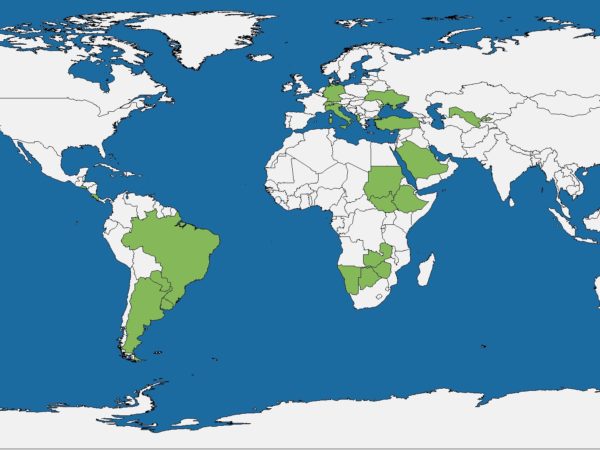
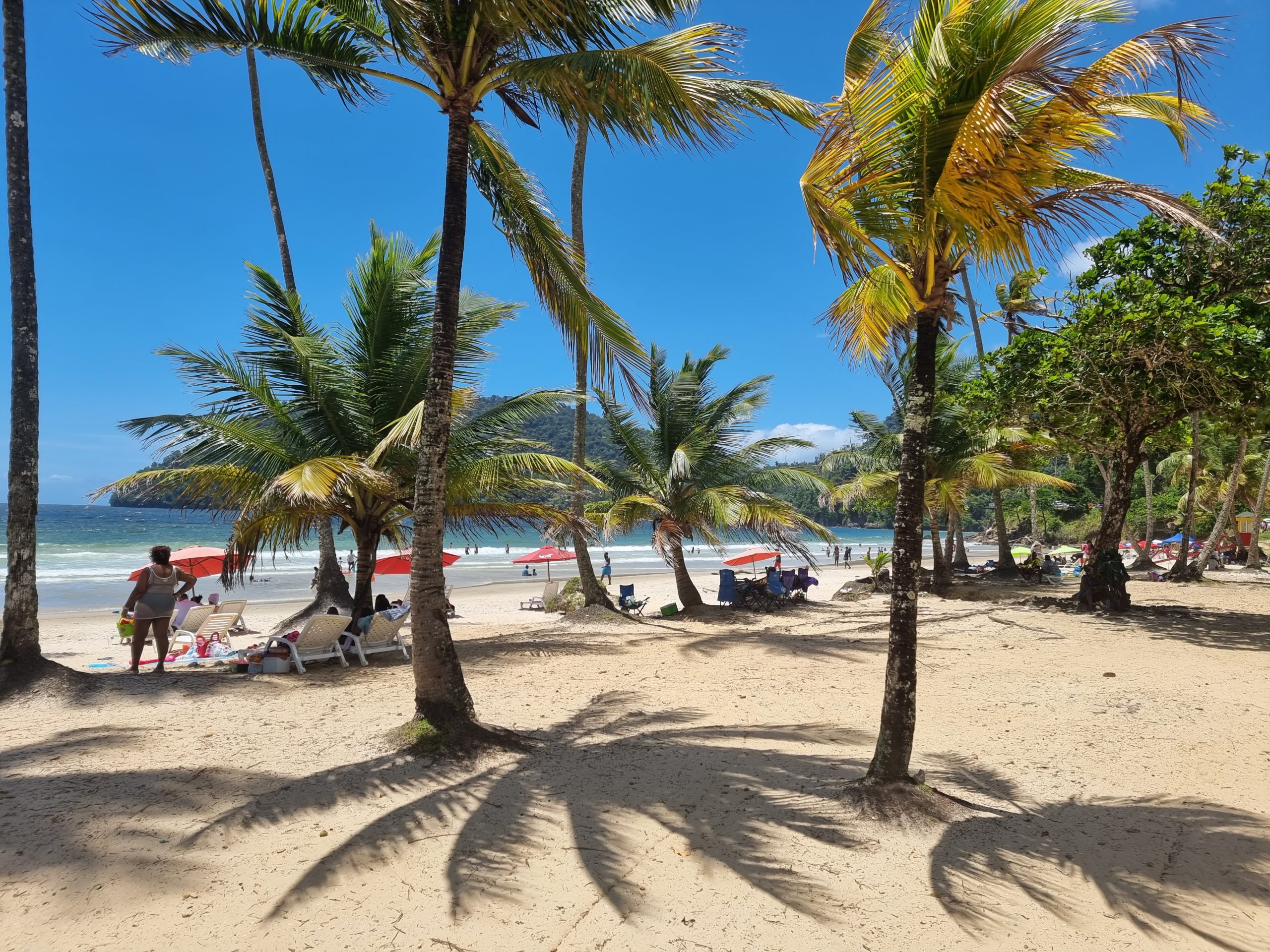
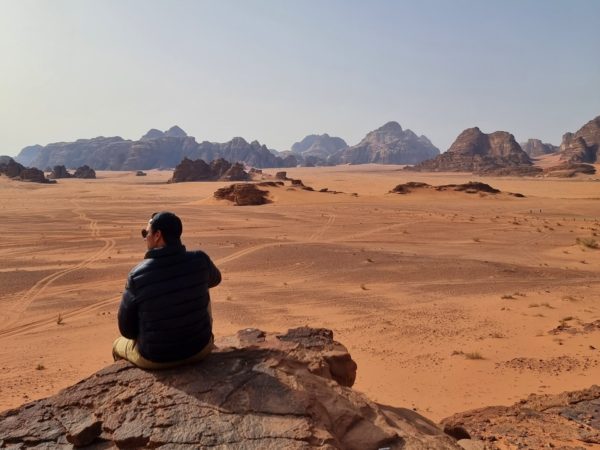
great report about Syria Tourism !
thank you .